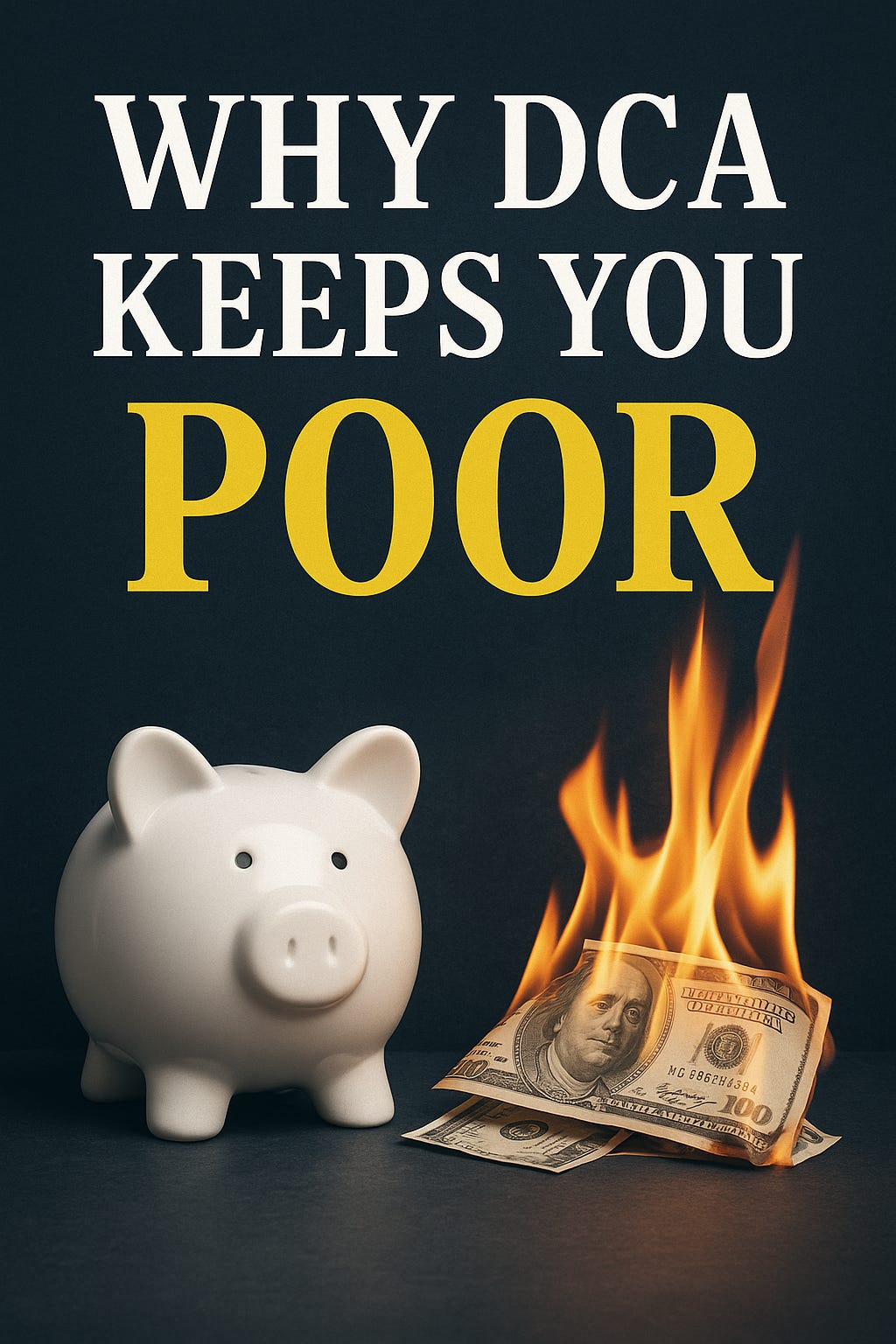Why DCA Keeps You Poor
Fear Is a Buy Signal Not a Warning
Investing consistently no matter what happens sounds responsible. Elegant. Almost stoic. It’s what all the indexing gurus tell you: “Do DCA and forget about the market.” But if your goal isn’t to feel good but to get rich, you need to look at the data with less faith and more cold logic.
Let’s cut to the chase: DCA is like wearing a seatbelt... in a Formula 1 race. It protects you from emotional mistakes, yes, but it also keeps you from hitting the gas when it’s time to accelerate.
The difference between a wealthy portfolio and a mediocre one isn’t how much you invest each month, it’s when you’re willing to invest aggressively while everyone else is running away.
Over the last 50 years, the S&P 500 has offered brutally profitable opportunities… but only to those who dared to buy when fear was at its peak.
Let’s look at the numbers:
If you had invested €100,000 in the S&P 500 in March 2009 (the bottom of the Great Recession), by 2020 you’d have over €400,000. In contrast, if you DCA’d over those 11 years, you’d have ended up with just €250,000.
In March 2020, when the market collapsed 34% in three weeks, contrarians who bought aggressively doubled their investment in under 18 months. DCA investors had barely started to recover by then.
Even in Bitcoin: those who accumulated during the panic of 2018 and 2022, when fear indices dropped below 20, have tripled or more. Those who started DCA in 2021 are still recovering losses.
So why does everyone recommend DCA? Simple: it protects most people from themselves. It minimizes behavioral errors, but it also minimizes returns if you have self-control, liquidity, and vision. It’s like training with foam dumbbells, you won’t hurt yourself, but you won’t grow seriously either.
Buying when no one else wants to isn’t comfortable. But big money is never made in comfort.
And just in case you think this is all theory, here’s a fresh example.
Just a few days ago, with the Fear & Greed Index showing 5/100, a crystal-clear signal of extreme panic, we issued a direct buy recommendation from this very newsletter. The result? The Nasdaq has climbed nearly +10% in the midst of geopolitical chaos and tariff war threats. While the headlines were screaming, if you acted, you capitalized.
And here’s the counterintuitive part: when you buy in those extreme fear situations, your portfolio’s real risk actually drops.
Why? Because you’re buying assets at 20-30% discounts, where worst-case scenarios are already priced in. Volatility may persist, yes, but the margin of safety is far greater.
Real risk isn’t volatility. It’s overpaying for something that can still drop much further.
We don’t need to predict the exact bottom. We just need to recognize when the market is irrationally scared.
Does it scare you to go in hard during a crisis? Good. Fear is the signal. The key isn’t to eliminate fear, it’s to have a system that tells you when to act despite it.
And that system isn’t DCA. It’s a disciplined contrarian approach.
What the wealthy do is not invest blindly every month. They build a war chest—an opportunity fund. They wait, observe, and strike when the market is on fire.
Does it make sense to invest €500/month into ETFs when the market is at all-time highs, sentiment is euphoric, and valuations are stretched? Maybe, to keep the habit. But does it make sense to invest with the same intensity when the market is 25% cheaper, panic is widespread, and no one else is buying? No. That’s when it makes sense to go big.
The key lies in asymmetry: when you buy high, your upside is capped and your downside is dangerous. But when you buy during mass fear, the equation flips.
Warren Buffett didn’t get rich doing DCA. He got rich waiting patiently, with dry powder, and pulling the trigger when everyone else was hiding.
Financial freedom isn’t built on autopilot. It’s built on strategy. And that means learning to think differently, act differently, and yes, get uncomfortable while doing the right thing.
Do you feel uncomfortable buying when the market is bleeding red? You should. But if everything you do feels comfortable, you’re probably not growing, financially or as an investor.
This isn’t about timing the exact bottom. It’s about buying with logic when others are buying with fear… or not buying at all.
DCA is the comfortable strategy. Contrarian, if you’ve got the guts and the plan, is the profitable one.
And you get to choose which side you're on.

